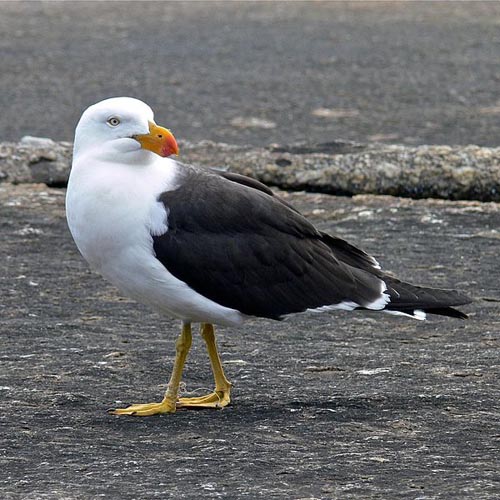FLUORESCENT jelly has been unveiled as the latest weapon in the war against sea gulls in Scotland.
Environmental health wardens in two Scots councils are to place bowls of the substance on the roofs of buildings to scare away the pests.
The “Fire gel” works by tricking the birds into thinking the structure is on fire. It’s thought the birds dislike the smell as well as the appearance.
It also causes irritation to the bird’s feet if they land on it.
Feral seagulls are in increasing problem in Scots towns and cities Photo:David Brewster
The jelly, which was developed in the Far East, has already produced results in England after it was introduced recently.
Aberdeen city council decided to trial the jelly after Stuart Forsyth, authorised officer with the environmental health department, was impressed by a presentation on the substance.
The council say they receive hundreds of complaints about the feathered fiends every year but are limited in the action they can take against them.
But the project won’t come cheap as each tube of Bird Free Fire Gel can cost up to £35.
He said: “They showed us an underground car park that was absolutely clarted with pigeon fouling, then showed us what it looked like after they started using this fire gel and it was pristine.
“Nobody seems to know exactly how it works. The theory is that as the fumes evaporate they look like fire to birds, but whatever it is it seems to get results so it has to be worth a try.
“The more weapons we have in our armoury the better.”
However he blamed householders for exacerbating the problem.
He said: “The reason urban gull numbers are increasing so rapidly is because people make it too easy for them by leaving out food.”
Humane
Angus Council are also using the substance to keep away unwanted gulls.
A council spokeswoman said: “The gel does not kill, harm or trap birds but deters them from landing on buildings as they see ultraviolet light which appears to them as fire.
“The visual deterrent is reinforced by selected natural oils in the product, which are abhorrent to a bird’s sense of taste and smell.
“The deterrent effects last for two years, even in exposed environments, and birds are known to desert a habitat they have used for years once the gel is installed.”
The jelly, which is made by JJ Bio, will be placed at sites which are unsuitable for traditional deterrents, such as spikes and nest removal, because of aesthetic considerations or because of the shape of a building.
Sea gulls often roost in high rise buildings as there are plenty of platforms for them to build their nests.
They will also settle near a food source, such as scraps put out for garden birds.
But nesting gulls can often cause structural damage and be aggressive when raising chicks.
Earlier this week it was revealed that pest control firm Rentokil was offering a deterrent containing chilli paste.
The substance sticks to the birds’ feet and causes a stinging sensation and prevents them from roosting.
